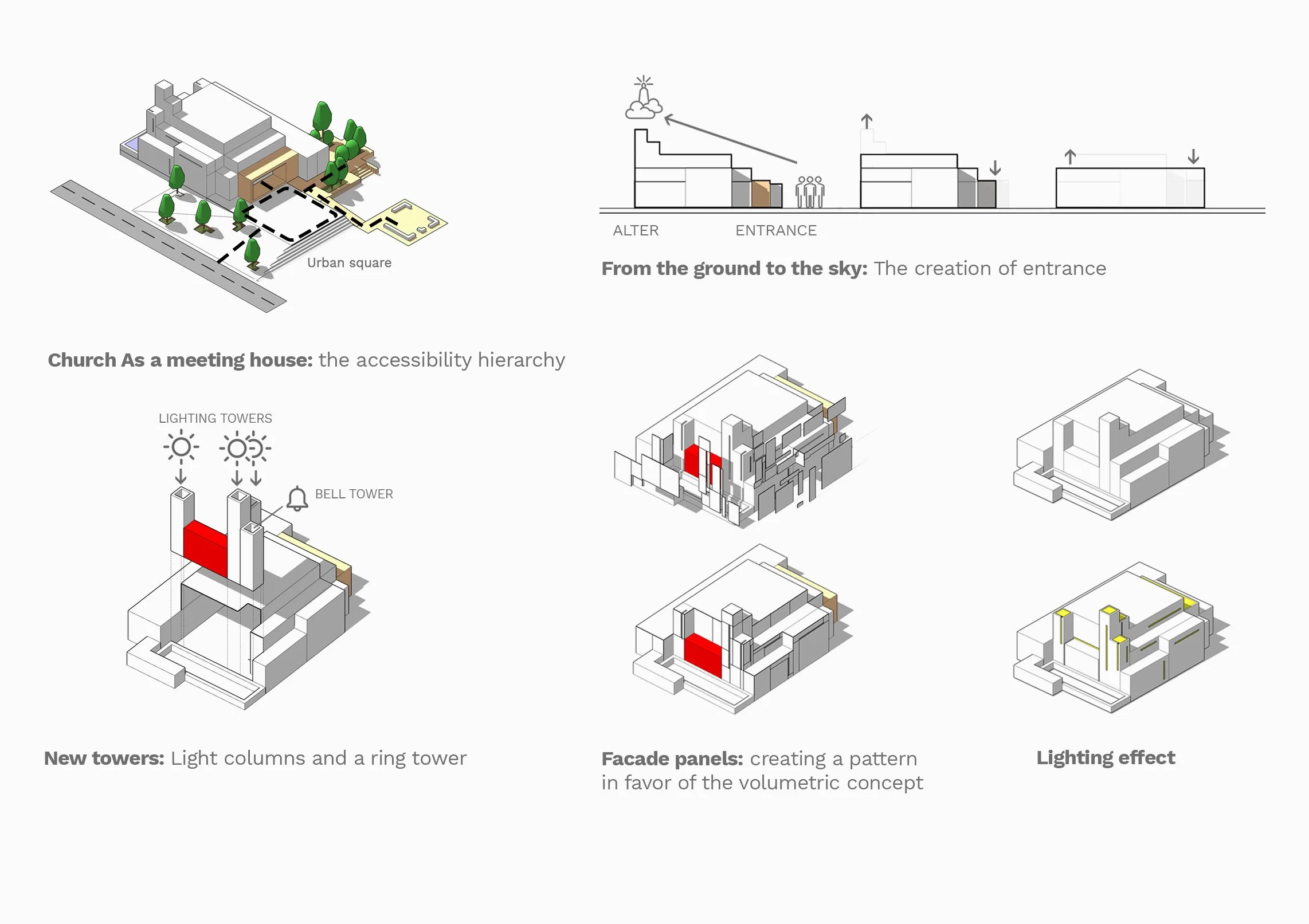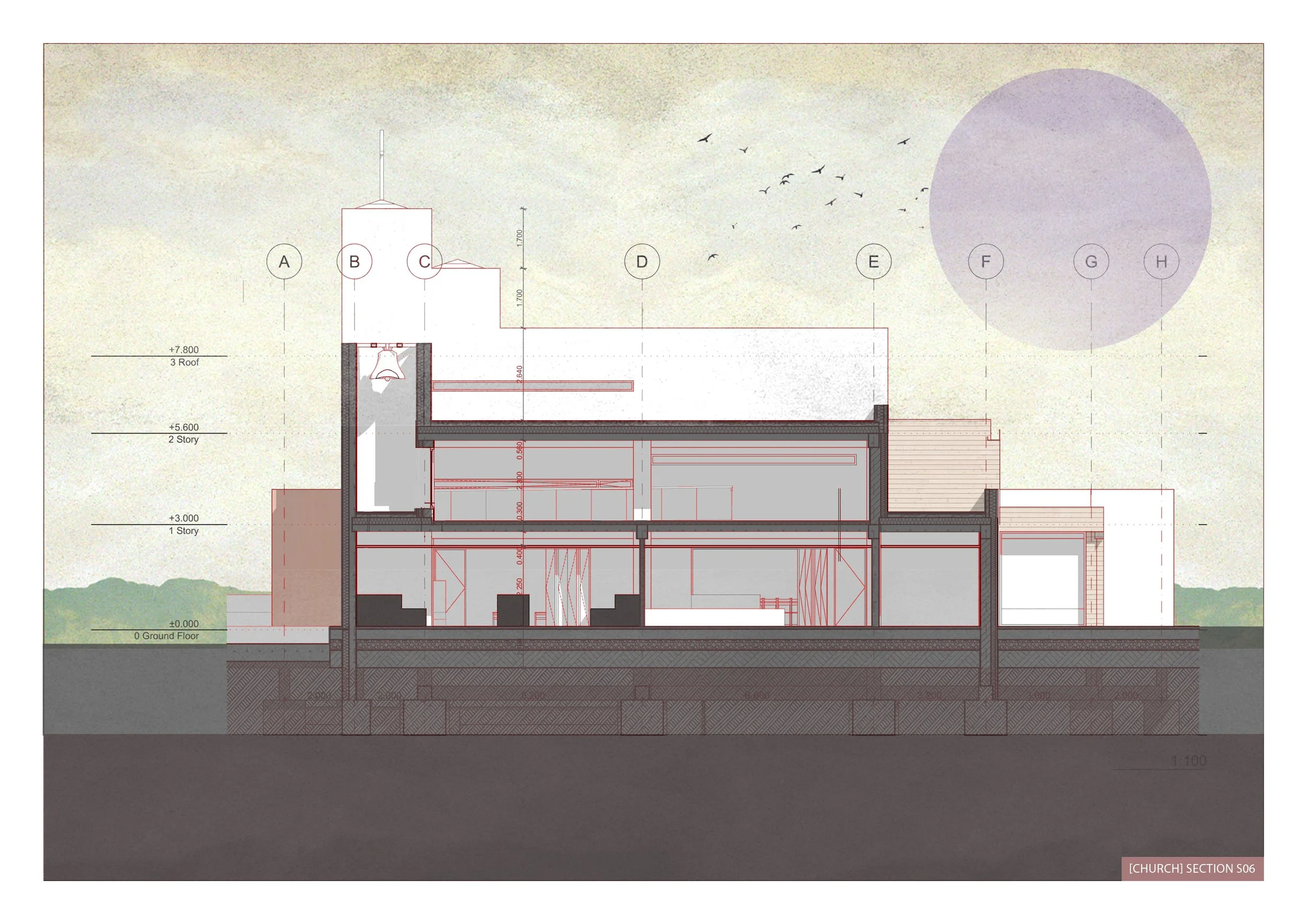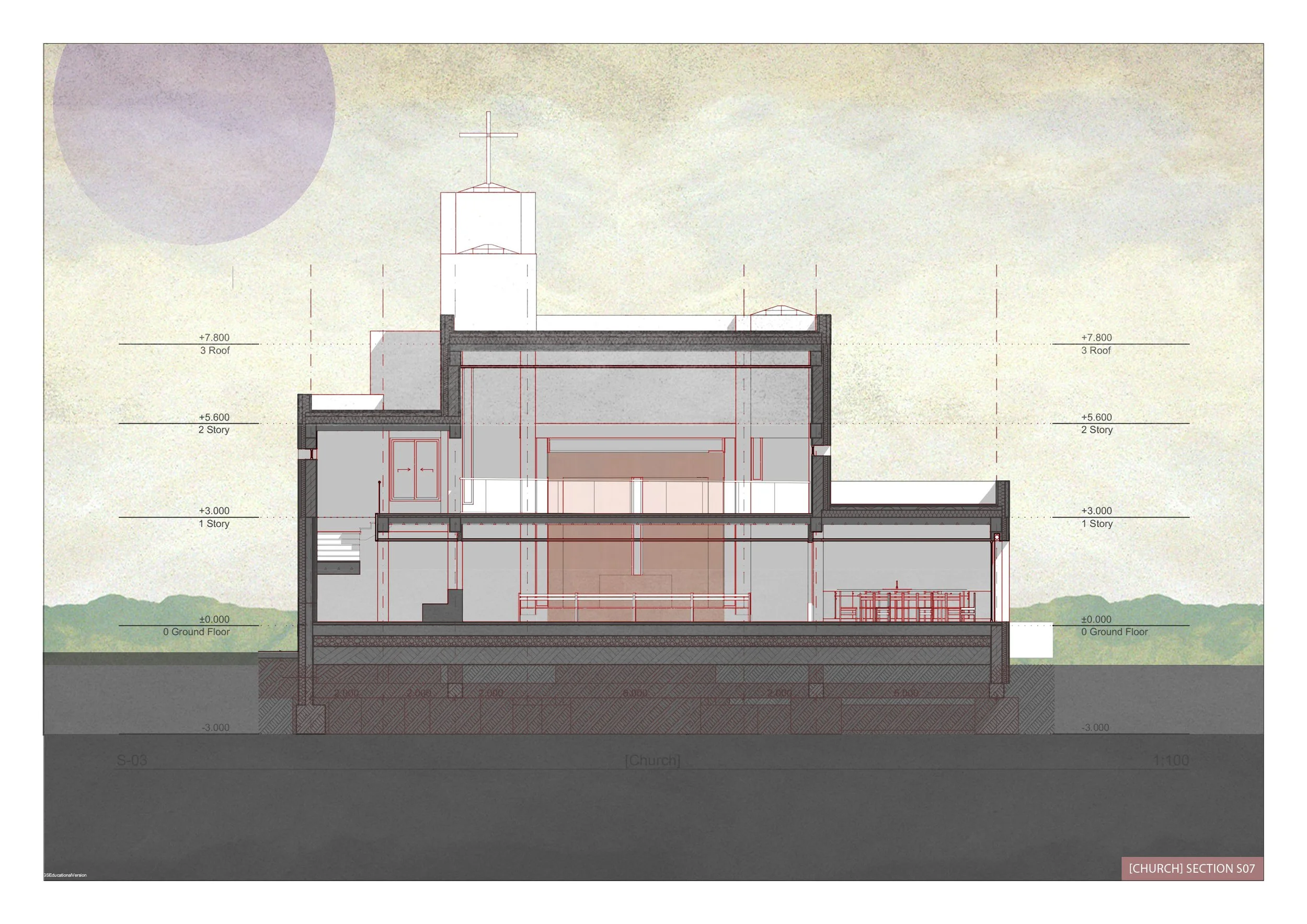2022
the Lutheran Church of Budakalás
Master of Architecture Diploma project
Lutheranism as one of the largest branches of Protestantism identifies with the theology of Martin Luther, a 16th-century German monk. During the Reformation, Lutheranism became the state religion of numerous states of northern Europe, especially in northern Germany, Scandinavia, and the then Livonian Order. Actually, Lutheranism spread through all of Scandinavia during the 16th century, as the monarch of Denmark–Norway (also ruling Iceland and the Faroe Islands) and the monarch of Sweden (also ruling Finland) adopted Lutheranism. Through Baltic-German and Swedish rule, Lutheranism also spread into Estonia and Latvia.
In Hungary, although Lutheranism is not the major branch of Christianity, it has its own followers, especially among senior German and northern Europe residents in the country.
In Budapest, there are several Lutheran churches the majority of them are located in the central part of the city. Among them, the Lutheran Church of Budavár can be considered the oldest, and the Lutheran Parish of Budahegyvidék is the newest one with some modern approaches in design.
Based on the distribution of Lutheran churches, Budakalasz as a town in Pest County with a population of more than 10 thousand, can be considered a relatively suitable location for the new fresh church to help this community be strengthened. The nearest Lutheran church for the residents of this area is more than 15 Km away.
Church As a meeting house
Churches could not be built in the traditional image of a church: no traditional towers and direct street entrances, and the buildings had to look like meeting houses that were converted from dwellings. As we can discuss here an urban gathering square in front of a church plays an important role in connecting the street, entrance of the church, and other common spaces.
Light effect: Contemporary Lutheran architecture does not make use of paintings or sculptures, rather decoration is created by the materiality of surrounding surfaces themselves. The patterns, texture, and detailing give the impression of individuality in handcrafted ornamentation. Walls treated the same way on both faces establish a calm, elegant feeling, that corresponds to the Lutheran tradition.
Mysticism: the vertical emphasis of the Gothic style (reaching toward heaven) is a discussable case in the Lutheran churches. Here, this vertical emphasis can be followed in lighting towers surrounding the altar. But again more typically the mysticism of light is used to create this impression.
The volume evolution




















